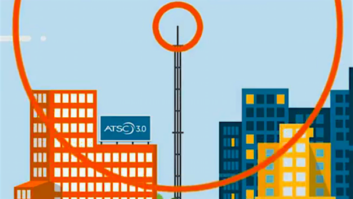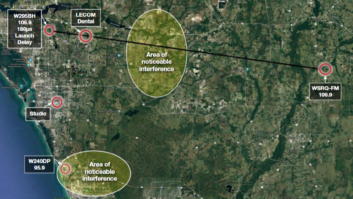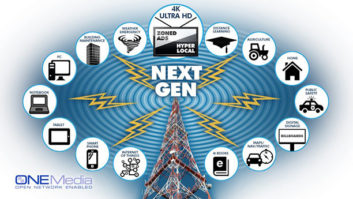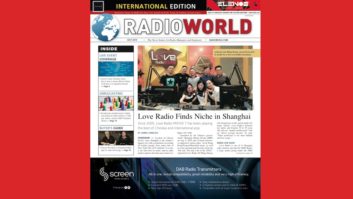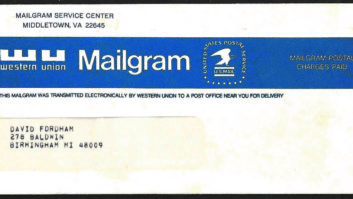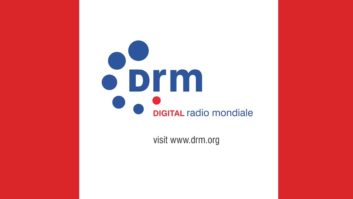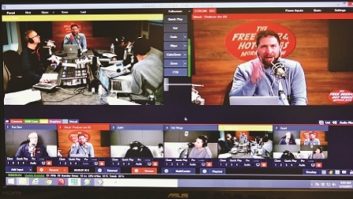The author is chairman of Digital Radio Mondiale.
In a recent petition to the FCC in the United States, a Texan broadcasting corporation rightly points out that “all-digital systems represent the future of radio.” This is the premise of its request to allow the introduction of pure HD in the medium wave in the U.S.

As some broadcasters are questioning the current performance and the limited testing of HD in this band and its reception quality and coverage, such a request has certainly opened a digital Pandora’s box. It has also shown that something better than the current simulcasting scenario (mainly used in the FM band, with its own interference issues) is needed.
“Simulcasting” is a bit like “digital” or “hybrid” and can have a lot of meanings and nuances. The word generally refers to broadcasting in analog and digital at the same time, whether in the VHF or AM bands (mainly medium wave, as simulcasting in shortwave could be a step too far and engineers do not really recommend it).
Simulcasting exists in pure digital. In a very broad sense, we could say that DAB can broadcast simultaneously up to 18 (different) programs covering the same area and using a chunk of 1.5 MHz of spectrum in Band III. Or DRM can broadcast up to three (different) audio programs and one data program using the spectrum occupied by an analog medium wave channel or half a FM channel (96 KHz) and in Bands I and III as well.
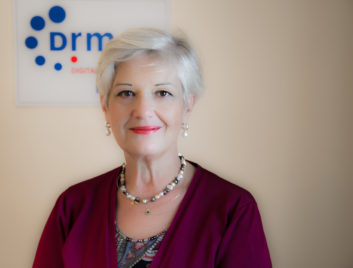
Some broadcasters have taken the simulcasting route (same program in analog and digital) in the belief that it will deliver the same power and coverage in both modes — nonsense in physics. This would be a bit like sharing an apple between two brothers and hoping that each will enjoy the whole fruit.
Even if digital radio is less energy hungry than FM or AM (DRM for example only requires a maximum of 10% of the power needed for FM analog), simulcasting needs compromises simply because analog and digital carry audio differently. Simulcasting requires extra equipment, extra energy, if the same coverage is to be maintained, extra planning and extra care.
So why go for simulcasting then, at all? Simulcasting is a good way to introduce digital radio and the extra benefits related to audio quality, richness of content and data. India has taken this path with its 35 medium-wave transmitters that simulcast in analog and DRM, while slowly introducing pure digital DRM.
As digital transmitters are calibrated and receivers slowly emerge, ready to be bought by the listeners, simulcasting is a valid transition path.
In DRM, at least, one single transmitter can support broadcasting both an analog and a digital DRM signal side-by-side, or even where available in the band (this refers mainly to the VHF Band II).
The extra costs of simulcasting dictate, though, that a switch off date needs to be set, as this concentrates the minds and efforts and does not stretch the project into uncertain times. And like so often, timing is everything.
There can be an abrupt switch off, like in Norway. There can be a transition, a voluntary switch to digital (medium wave) only, as it is on the discussion FCC agenda just now.
Or there can be a consultation, a digital review, as recently announced in the United Kingdom. The British Digital Minister rightly considers that, due to the changes in technology and competitive landscape in the past five years, “the debate about the future digital transition program for radio has shifted.”
So, while switch off straight away or simulcasting seemed the best two possible scenarios, the situation looks a bit more complex with the addition of IP or broadband delivery and other platforms to the digital radio mix. After all, when a program is terrestrially broadcast and also streamed, we also have simulcasting.
This digital cocktail preoccupies many of the broadcasters, the politicians and especially the observers of the mysterious millennials or “snowflakes.” The figures are quite clearly in favor of terrestrial. In the U.K., online and apps deliver 11%, the channels on digital TV 5%, with DAB digital radio scoring about 40.4%, the result of the push and investment of almost three decades. In Australia FM is still supreme with 7.8 hours listening a week, AM 4.7 hours, digital radio 1.3 hours and online 1 hour (according to the research commissioned by the regulator in May 2018).
Is simulcasting then the dawn of digital radio? Or is it a permanent state of affairs paralyzing those afraid to lose a significant, though maybe declining analog audience, but very keen to chase new younger audiences and their new digital habits?
[Read: Will 5G Be Part of the Broadcasting Future?]
Simulcasting the same programs on both analog and digital only makes sense if analog cannot reach them (as it happens in parts of India and surely elsewhere). Maintaining the analog signal and adding the digital part immediately offers the chance to present the same channel but, at least in DRM, also bring new content on at least the two extra channels created in digital.
These can be used for new content and can increase revenue opportunities while increasing competition. In this way simulcasting offers enhanced capacity to carry the same in analog and digital but also something new and better, more attractive that can prove the advantages of digital radio.
Simulcasting can stifle or enhance radio. In the U.S., leaving simulcasting and pitching for pure HD in AM is seen as a way of saving the valuable medium-wave band. There are other ways, too, as mentioned by Larry Todd, vice president of WRNJ Radio, in the article he wrote for Radio World on a solution to the AM Problem.
Simulcasting analog and digital radio signals is more than a technical issue. It is about creating new attractive content rather than just duplicating existing programs and formats. It is about accepting competition, opening the radio market and about a strong belief in radio and its digital terrestrial future.
If simulcasting is just buying time for an unidentified “better” hybrid future, digital radio will remain in limbo.
